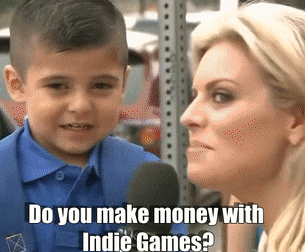Today, an indie studio can be successful in the mobile market, even releasing paid games. About this App2Top.ru the Yerevan studio Koreez told.
The author of the publication is Arbak Martirosyan, Production Director of Koreez.

But that’s the way we went.
Koreez Studio appeared in the summer of 2016. We gathered it from former colleagues and friends.
We had experience in the industry. As part of another startup – Ipsum Games – we managed to release several minimalistic games in the spirit of Ketchapp. One of them – Rocket Moon – even received a small feature throughout Europe. However, this did not save the game from the inevitable stigma of “failure”, and the once successful publisher BulkyPix – from bankruptcy.
We did not despair and continued to “eat cactus”. Together with other partners/investors, we undertook the creation of two Unity projects at once. The heroes of this material – Parallyzed and Roofbot – grew out of them.
Parallyzed
The idea of Parallyzed goes back to the time of our belief in the viability of the Ketchapp model of games: minimalism, endless gameplay and high complexity. The first prototype looked the same.

It was an autorunner on two parallel floors. In the game, the user had to overcome obstacles, simultaneously controlling two characters, changing their places.
With geometric shapes, we initially imagined everything. In terms of graphics, then we started from the very successful Geometry Dash, which was a super-complex platformer.
But at some point there was a change of visual style. By the middle of 2016, the boom of minimalistic arcades was already behind us, and we decided to make the graphics richer.
Our art director Anush Arakelyan, eager to draw a beautiful game with backgrounds, and not a set of geometric shapes, took up the story of two girls in gloomy, sometimes psychedelic locations.
She decided to tell the story as part of the introductory video. It revealed the characters of the sisters and showed a tragic incident that separated them: in a fit of envy, the older sister pushes the younger one off the swing, as a result of which she ends up in a coma.
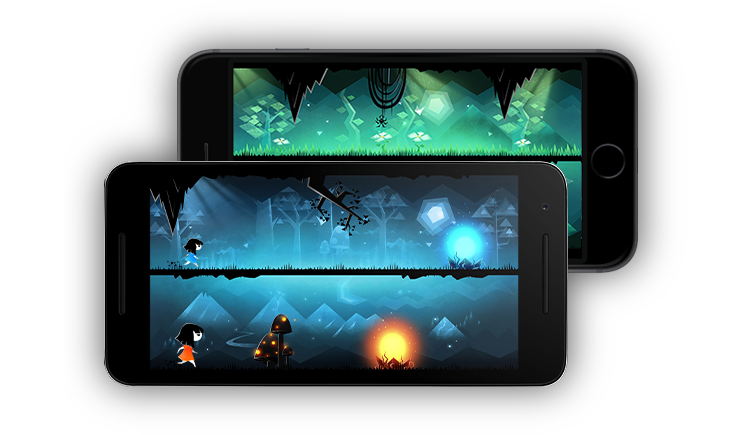
Creating a 25-second introductory video took very little time and effort from the team, but it paid off handsomely. After the release, players often praised the story in reviews and noted how it takes the soul and sets it up in the right way.
The game got the name Parallyzed, among other things, thanks to history. The word is formed from the English “parallel” and “paralyzed”: it immediately reflects both the essence of the game mechanics and the plot.
We like the name of the game ourselves, but it has a problem. Google and YouTube consider the name a typo. It’s hard to say how many potential installations we lost because of the name, so in the future we decided to avoid such tricks for ourselves.
The creation of Parallyzed took 4 months. During this time, the game has acquired 15 locations. For each of them we have created a unique complicated variation of the basic game mechanics.
Successful completion of each, on average, takes from 30 to 60 seconds, but it is impossible to pass any level in less than 5-10 attempts. Before the release, among the developers, for example, only I could do it, who was just making up these levels.
As soon as we put together the project, we sent the game to major publishers. Among others, Yodo1 became interested in her. In the end, however, the company was not satisfied with the game. The publisher decided that the mechanics of the game do not fall on the frituplay.
Their words were true. Offhand, it’s hard to remember a successful free platformer (only the high-budget Rayman Adventures comes to mind). Plus, in Parallyzed, skill is at the forefront. Any attempt to disassemble the process into parts and pull the pumped elements on them would look artificial.
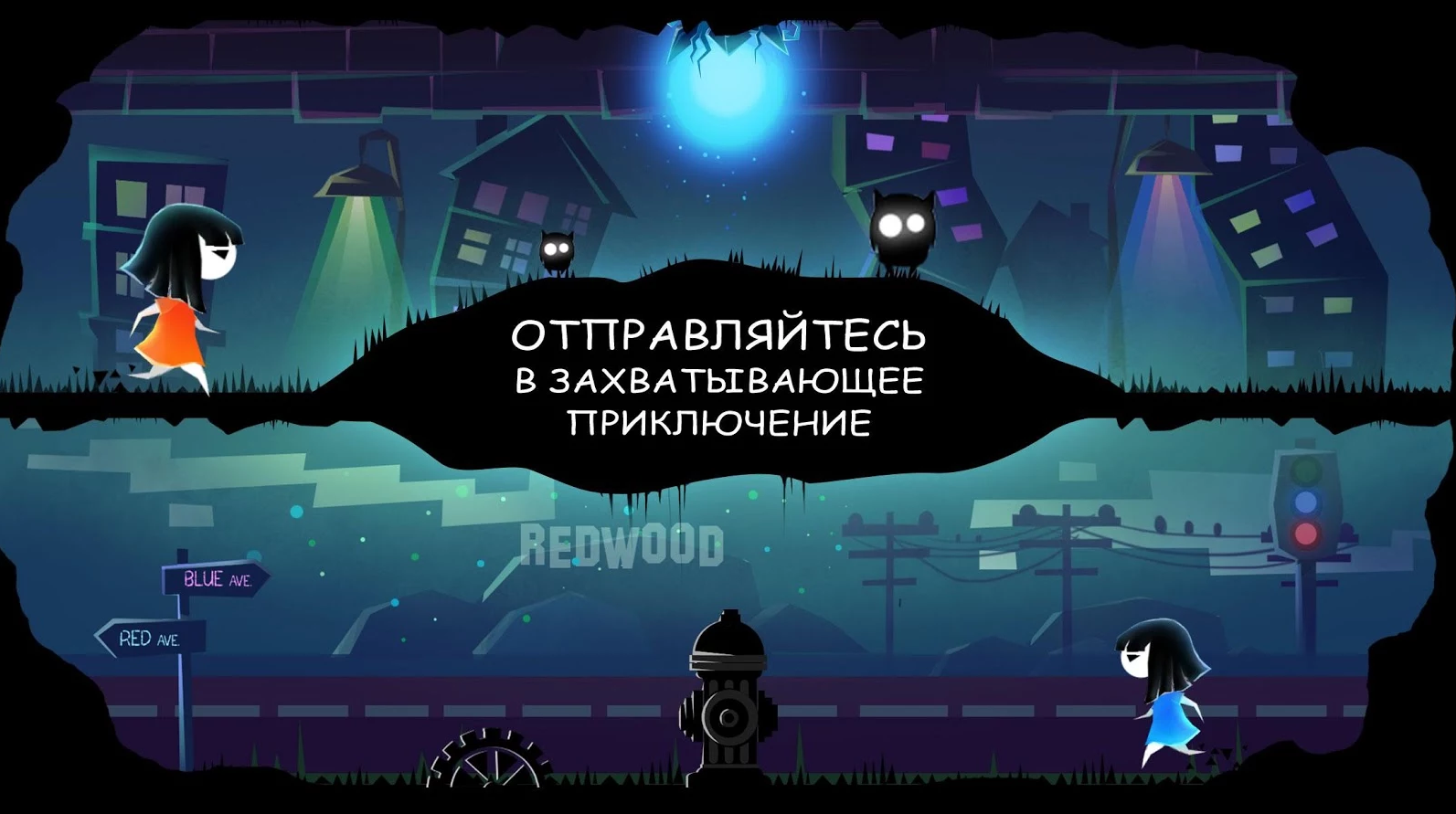
As a result, we found a common language with the Double Coconut team, which became our publisher. An important role here was played by the fact that they helped us participate in the Google Play Indie Games Festival, which was held in San Francisco for the first time in September.
The fact is that for studios registered outside the USA and Canada, registration was closed. We really wanted to participate. Double Coconut just volunteered to help us.
At the festival, we were among the four finalists. The game was already available on Google Play at that time, where it was distributed using the frituplay model. The course of the game was not bad and without feathering. However, monetization was not very good – advertising and one IAP that disables it.
Simultaneously with the release on iOS, we changed the distribution model of the game to Google Play. Now the game on the Android platform is like a freemium application: several levels are free, and you have to pay $2.99 to unlock the entire game.
At the same time, we have not removed advertising: even if eCPM is low (we use HeyZap and 3-4 top networks), but advertising generates a certain profit.
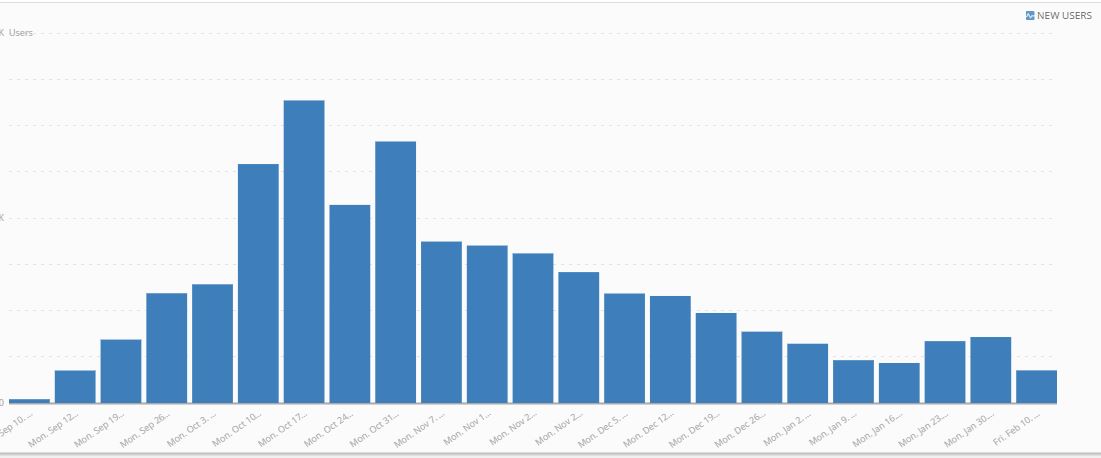
On Google Play, the game turned out to have a much longer life cycle than on the App Store. After the release week (we received a small feature in the Indie categories), the game did not die: users constantly come from somewhere, sometimes they also spend. To this day – six months after the release – the game has stable 2-3 thousand installations per day, thanks to which we will soon exceed 500 thousand downloads.
Roofbot
In parallel with Parallyzed, work was underway on Roofbot, a puzzle that became an Apple favorite.
The game was very different from our first project. Instead of two sisters, there is a cute robot in it. Psychedelics were replaced by futurism. In place of arcade jumps came complex puzzles.
Roofbot was also included in the list of 30 participants of the Google Play Indie Games Festival, but this time we were not given traffic.
Despite this, the game scored about 100 thousand installations on one organic, and also received very positive reviews from the press and players (the rating varies between 4.6-4.7/5 ).
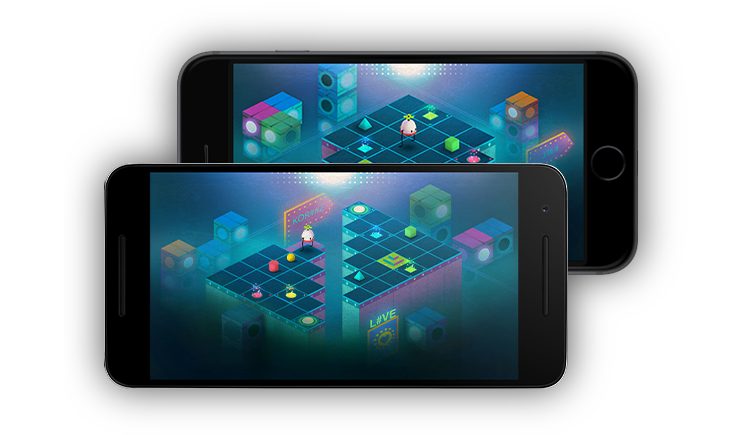
Release on iOS
We had a risky launch on iOS.
We decided to release both titles at the same time, and even as paid applications – at a price of $ 2.99.
Even at the appruv stage, it became clear to us that Roofbot could get a feature from Apple. The editors of the App Store requested “promotional art” for promotion on social networks, as well as a huge promo banner (4320 x 1080).
We were then told that this was necessary for potential promotion on the App Store. Nothing like this was asked for for Parallyzed.
The release day was approaching (October 27, 2016). The whole team was very worried.
Late Thursday evening, the App Store began to update.
The first new selection of the week appeared in European countries – there Roofbot received a weak feature: 7-12 places in the New Games We Love section.
Then Apple updated weekly collections in China, and a little later in Canada. And, lo and behold, in both regions, Roofbot was on the 4th place in the selection, and Parallyzed was on the 7th!

A guess has crept into our hearts that there is one selection for conditionally minor stores, and another for conditionally “main” ones (USA, China, Canada, possibly also Japan and Korea). And, at least in the week of our release, so it turned out.
In the USA on Friday night, only Roofbot appeared – again, in 4th place!
Halloween somewhat spoiled everything: until the 31st, due to thematic collections of applications and stickers, the New Games We Love section was lower than usual.
But on Tuesday, 4 days later, Parallyzed appeared in the selection of the American store.
We received the most downloads from the USA and China. Games were also actively bought in the UK.
I can’t tell you the exact sales figures, but the range is close to five digits.
In a week with less high–profile releases, Roofbot could probably get an Editor’s Choice, but along with us came a game from the developers of Test Drive Unlimited – Gear Club, as well as an average pinball arcade PinOut from talented guys from Mediocre games.
After the end of global feathering, Roofbot and Parallyzed began to receive several dozen installations per day. Closer to Christmas, we released updates with new levels for both games, we even got a small feature, but the jump in installations was insignificant.
The fact is that the Best New Updates section, previously consistently appearing on the homepage, is now a rare guest there. In the same USA, you can see it only by going to the Games section.
Experience the “Free App of the Week”
Another important event for us happened in early January.
We received an email from Apple saying that our Roofbot app is being considered for free promotion as part of the Free App Of the Week. The editorial office of the store requested a promo.
We did not have 100% confidence that Roofbot would be promoted. It’s all about Apple’s (not unreasonable) manner of leaning on the word “potentially”.
But on the evening of February 2, we saw Roofbot on small (and not very) banners around the world.
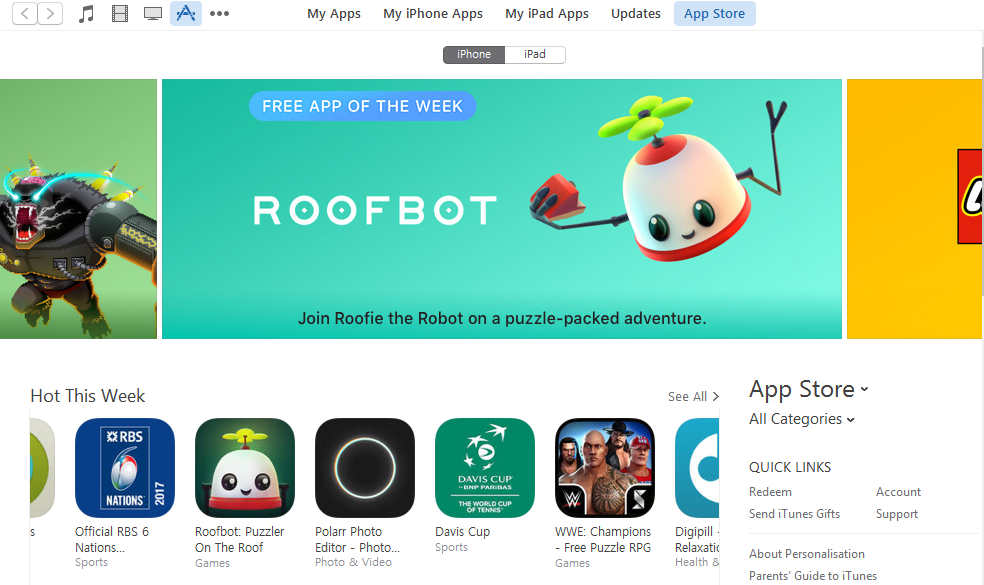
According to our estimates, the number of downloads that can be obtained in a week of App Of The Week without any marketing ranges from 500 thousand to 2 million. The deciding factor is in which countries the game will receive a top banner on the home page, and not the usual App Of The Week banner on line 4-5 of the main page.
Our game was positioned well – we got a top banner in China, the UK, almost all over Europe and Latin America.
The game received a decent number of downloads in the USA, Japan and Korea, where there was only a regular banner. In just a week – 1 million with a tail.
How many installations do I need to get into the tops?
Some useful statistics about how many installations are needed to get into the top downloads in key countries.

- USA – 30-35 thousand installations per day will ensure getting into the Top 60 free apps and a place in the Top 25 games.
- China – 25 thousand installations per day will give a place in the Top 50 games.
- Japan – 5 thousand installations per day will give a place in the Top 50 games
- South Korea – from 3 thousand to 5 thousand installations per day will give a place in the overall Top 40 and in the Top 10 games.
- Russia – 6 thousand installations will ensure getting into the overall Top 80 and a place in the Top 20 games.
Simultaneously with the promotion of Roofbot, we have reduced the price of Parallyzed to the minimum price tag.
In some regions, the minimum price tag is the so-called Tier A. In the USA, Tier A is $0.99. Tier A in other regions is based on the Tier A price in the USA.
Many countries, including Russia and China, have Alternate Tier A. It usually differs significantly from the dollar. For example, Alternate Tier A in Russia is 15 rubles.
Where possible, we set Alternate Tier A.
As a result, it was in countries with an alternative low price tag, as well as an aggressive Roofbot promo, that Parallyzed received a large increase in installations: about the same as in the week of release.
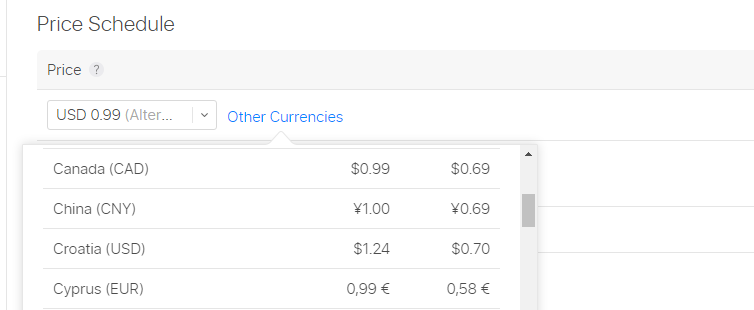
Conclusions from the launch of Roofbot and Parallyzed
The launch of Roofbot and Parallyzed on Google Play and the App Store allowed us to come to the following conclusions.
1. Deliberate typos in the name of the game, no matter how well they convey the meaning of the game, is not the best idea.
2. It is very important that the theme of the game and its characters are suitable for the audience that loves this genre.
The Parallyzed genre is a hardcore platformer, but more than 70% of users are women. The story of the sisters interested them much more than the gameplay.
3. No matter how simple / short the game may be, the presence of at least some plot in the form of a short introductory video significantly increases user engagement, so you should not regret this time.
4. In the case of paid games, using Alternate Tier A and B with alternative prices in China and Russia works well. But for the average user from the USA, there is not much difference whether to pay $1 or $3.
5. You should connect services like PlayFab or LeanPlum in advance to change the values of in-game purchases.
For example: you have an IAP of five tips worth $0.99. In the admin panel of the conditional PlayFab, we change the number five to the number ten, send push notifications to all users about the discount. We get a profit.
This is also how you can test which price for which number of bonuses is optimal for users.
It is fundamentally important that all these changes occur without updating the distribution.
6. To increase the effectiveness of push notifications, it is advisable to use “deep links” to the desired screen. If there is a notification about discounts, then the in-game purchases screen should open from it.
7. The selection of games of the week is different for Europe, USA, China, Japan and Korea. And they are updated at different times (App Of The Week/Editor’s Choice does not apply). In Japan, a new game can get a feature a week after its release.
8. Making money on paid games without a major publisher and without spending a dollar on marketing is real.
On iOS and Android, the total downloads of our two games have exceeded the 1.5 million mark, and there is also a release on Steam ahead. So this gif, which once painfully accurately conveys our condition, does not always coincide with reality.
